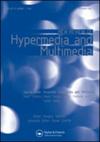Exploiting behavioral user models for point of interest recommendation in smart museums
IF 0.8
4区 计算机科学
Q3 COMPUTER SCIENCE, INFORMATION SYSTEMS
引用次数: 4
Abstract
ABSTRACT The Internet of Things (IoT) holds the promise to blend real-world and online behaviors in principled ways, yet we are only beginning to understand how to effectively exploit insights from the online realm into effective applications in smart environments. Such smart environments aim to provide an improved, personalized experience based on the trail of user interactions with smart devices, but how does recommendation in smart environments differ from the usual online recommender systems? And can we exploit similarities to truly blend behavior in both realms to address the fundamental cold-start problem? In this article, we experiment with behavioral user models based on interactions with smart devices in a museum, and investigate the personalized recommendation of what to see after visiting an initial set of Point of Interests (POIs), a key problem in personalizing museum visits or tour guides, and focus on a critical one-shot POI recommendation task—where to go next? We have logged users' onsite physical information interactions during visits in an IoT-augmented museum exhibition at scale. Furthermore, we have collected an even larger set of search logs of the online museum collection. Users in both sets are unconnected, for privacy reasons we do not have shared IDs. We study the similarities between users' online digital and onsite physical information interaction behaviors, and build new behavioral user models based on the information interaction behaviors in (i) the physical exhibition space, (ii) the online collection, or (iii) both. Specifically, we propose a deep neural multilayer perceptron (MLP) based on explicitly given users' contextual information, and set-based extracted features using users' physical information interaction behaviors and similar users' digital information interaction behaviors. Our experimental results indicate that the proposed behavioral user modeling approach, using both physical and online user information interaction behaviors, improves the onsite POI recommendation baselines' performances on all evaluation metrics. Our proposed MLP approach achieves 83% precision at rank 1 on the critical one-shot POI recommendation problem, realizing the high accuracy needed for fruitful deployment in practical situations. Furthermore, the MLP model is less sensitive to amount of real-world interactions in terms of the seen POIs set-size, by backing of to the online data, hence helps address the cold start problem in recommendation. Our general conclusion is that it is possible to fruitfully combine information interactions in the online and physical world for effective recommendation in smart environments.利用行为用户模型在智能博物馆中进行兴趣点推荐
物联网(IoT)有望以原则方式融合现实世界和在线行为,但我们才刚刚开始了解如何有效地利用在线领域的见解,将其应用于智能环境中。这样的智能环境旨在提供基于用户与智能设备交互轨迹的改进的个性化体验,但是智能环境中的推荐与通常的在线推荐系统有何不同?我们能否利用相似性来真正融合这两个领域的行为,以解决根本的冷启动问题?在本文中,我们实验了基于与博物馆智能设备交互的行为用户模型,并研究了个性化推荐,即在参观了一组初始兴趣点(POI)后参观什么,这是个性化博物馆参观或导游的关键问题,并专注于一个关键的一次性POI推荐任务-下一步去哪里?我们已经大规模记录了用户在参观物联网增强博物馆展览期间的现场物理信息交互。此外,我们还收集了一组更大的在线博物馆收藏的搜索日志。两个集合中的用户都没有连接,出于隐私原因,我们没有共享id。我们研究了用户在线数字和现场物理信息交互行为之间的相似性,并基于(i)物理展示空间,(ii)在线收藏或(iii)两者的信息交互行为构建了新的行为用户模型。具体而言,我们提出了一种基于明确给定用户上下文信息的深度神经多层感知器(MLP),并利用用户的物理信息交互行为和类似用户的数字信息交互行为进行基于集合的特征提取。我们的实验结果表明,所提出的行为用户建模方法,同时使用物理和在线用户信息交互行为,提高了现场POI推荐基线在所有评估指标上的性能。我们提出的MLP方法在关键的单次POI推荐问题上达到了83%的1级精度,实现了在实际情况下卓有成效的部署所需的高精度。此外,通过支持在线数据,MLP模型对所看到的poi集大小的实际交互量不太敏感,因此有助于解决推荐中的冷启动问题。我们的总体结论是,在智能环境中,将在线和物理世界的信息交互有效地结合起来,进行有效的推荐是可能的。
本文章由计算机程序翻译,如有差异,请以英文原文为准。
求助全文
约1分钟内获得全文
求助全文
来源期刊

New Review of Hypermedia and Multimedia
COMPUTER SCIENCE, INFORMATION SYSTEMS-
CiteScore
3.40
自引率
0.00%
发文量
4
审稿时长
>12 weeks
期刊介绍:
The New Review of Hypermedia and Multimedia (NRHM) is an interdisciplinary journal providing a focus for research covering practical and theoretical developments in hypermedia, hypertext, and interactive multimedia.
 求助内容:
求助内容: 应助结果提醒方式:
应助结果提醒方式:


